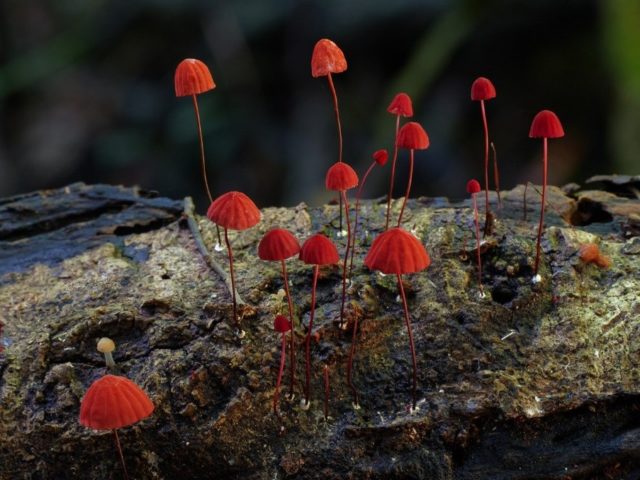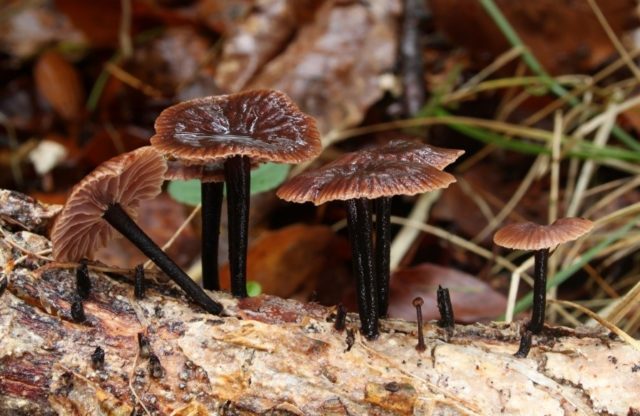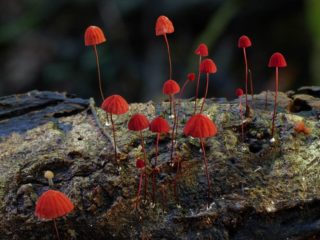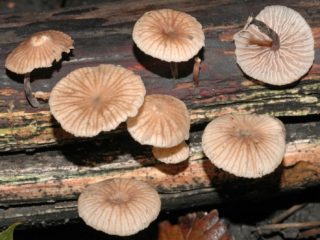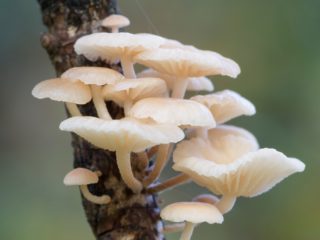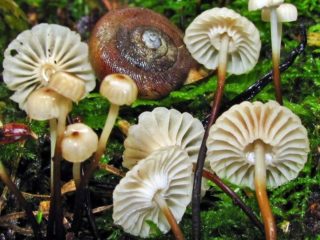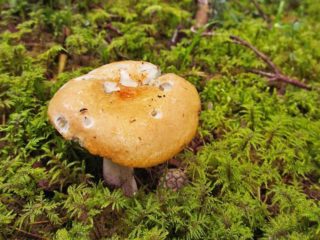Content
Dry Negniychnikov is a member of the Negniychnikov family. The Latin name for this species is Marasmius siccus, which also has a number of synonyms: Chamaeceras siccus and Agaricus siccus.
What does a dry non-drip look like?
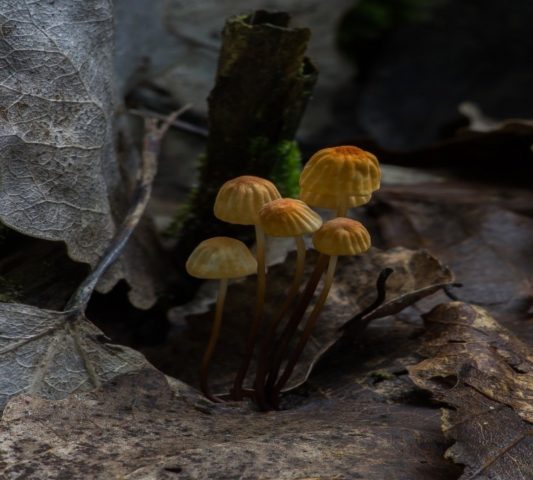
The mushroom is shaped like an umbrella
The fruit body of the specimen in question consists of a small cap and a long stem. The pulp is very thin, has a slight odor and a bitter taste.
Description of the hat
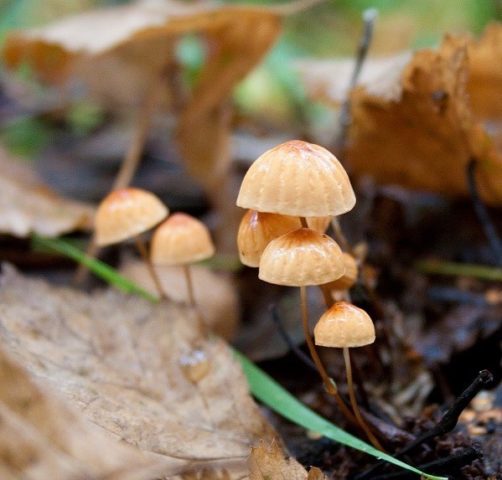
Always grows in large groups
At the initial stage of ripening, the cap of the dry non-stinker is bell-shaped or pillow-shaped; as it grows, it acquires an almost prostrate shape. In its central part, there may be a tubercle or a pronounced flat zone, less often - a small depression. The cap is small in size, it is only 0.5 to 3 cm. It is painted in bright red-brown or orange-brown shades, it fade in old mushrooms. In the central part of the cap, the saturated color lasts longer than along its edges. The surface is smooth, dry and matt with a pronounced radial groove.
On the inner side of the cap, there are rare, almost free, or adhered toothed plates. Painted in light cream or pale yellow tones. Spores are cylindrical or fusiform, smooth, sometimes slightly curved.
Leg description
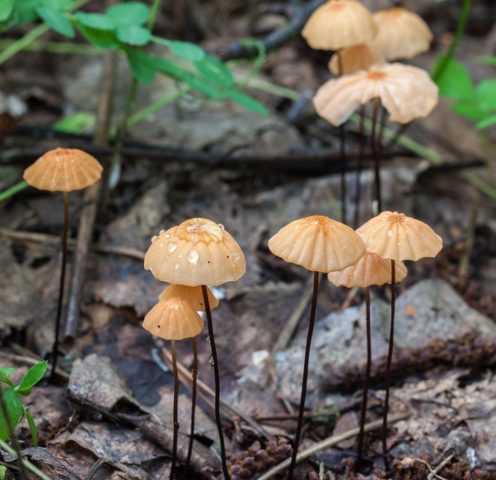
Grows throughout the summer and in the first half of autumn
For such a small hat, the leg of a dry non-stoneware is considered rather long, the height of which ranges from 2.5 to 7 cm. Its maximum thickness in diameter reaches about 1.5 mm. It is characterized as central, rigid, straight or slightly curved, even, without bulging. The surface is shiny, smooth to the touch. The upper part of the leg is colored white or light yellow, while the lower part is dominated by dark brown or black shades. At the base there is a white felt mycelium.
Where and how it grows
The optimal time for growing is the period from June to September. Most often, dry non-nipple dwells in deciduous forests on shallow deadwood or leaf litter, less often on needles. Widely distributed in Asia, America and Europe, including Russia, Belarus and Ukraine. This species does not tend to grow one at a time, usually occurs in large groups.
Is the mushroom edible or not
Dry non-fungus belongs to the category of inedible mushrooms. Due to the small size of the fruit bodies, it has no nutritional value and is not suitable for human consumption.
Doubles and their differences
According to its external features, dry non-nippers are similar to the following gifts of the forest:
- Blood-headed firebrand... It is an inedible and rare species that has the ability to glow at night. You can recognize the double by a small domed red hat and a rather long stem of dark shades.
- Wheeled - in shape and size of the fruiting body, this specimen is very similar to the described species. However, the distinguishing feature is the color of the mushroom.So, the hat of the twin is white in young specimens, and grayish-yellow in mature ones. Not edible.
- Smelly firebrand... It belongs to the group of inedible and poisonous mushrooms. You can distinguish a double by a yellowish-brown cap and a black, shorter stem, the maximum length of which is 3 cm. In addition, this species grows on old hardwood.
Conclusion
Dry firebug is a fairly common species of the Negniychnikov family, which can be found not only in Russia, but also abroad. However, such a specimen is not interesting to mushroom pickers, since it does not represent any nutritional value.
